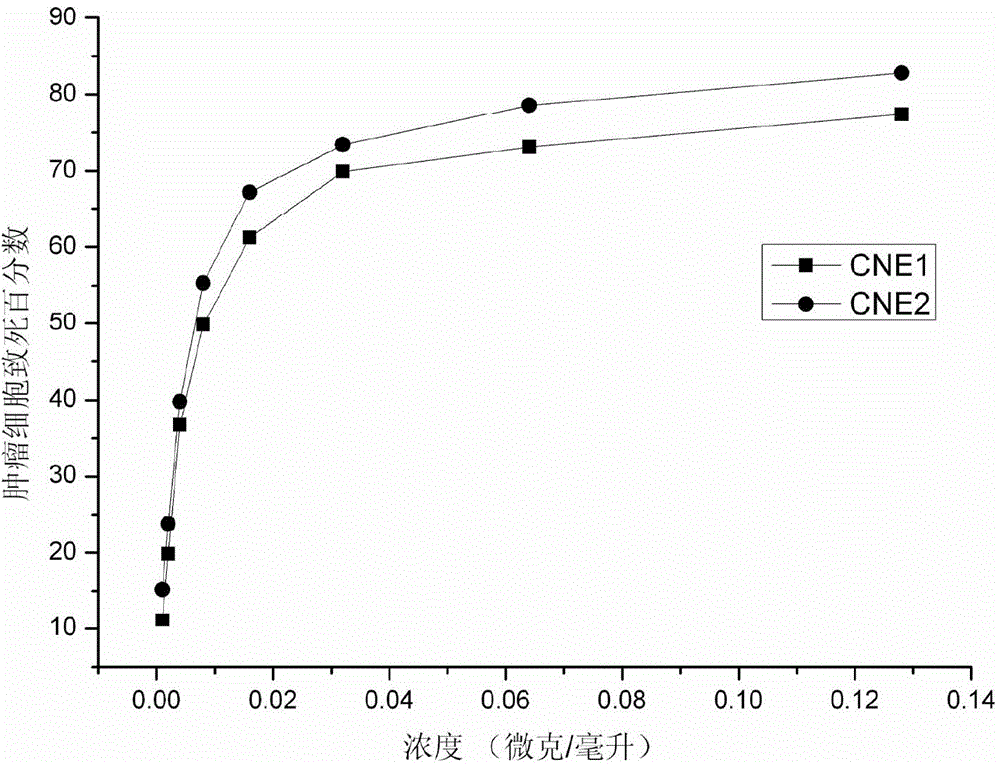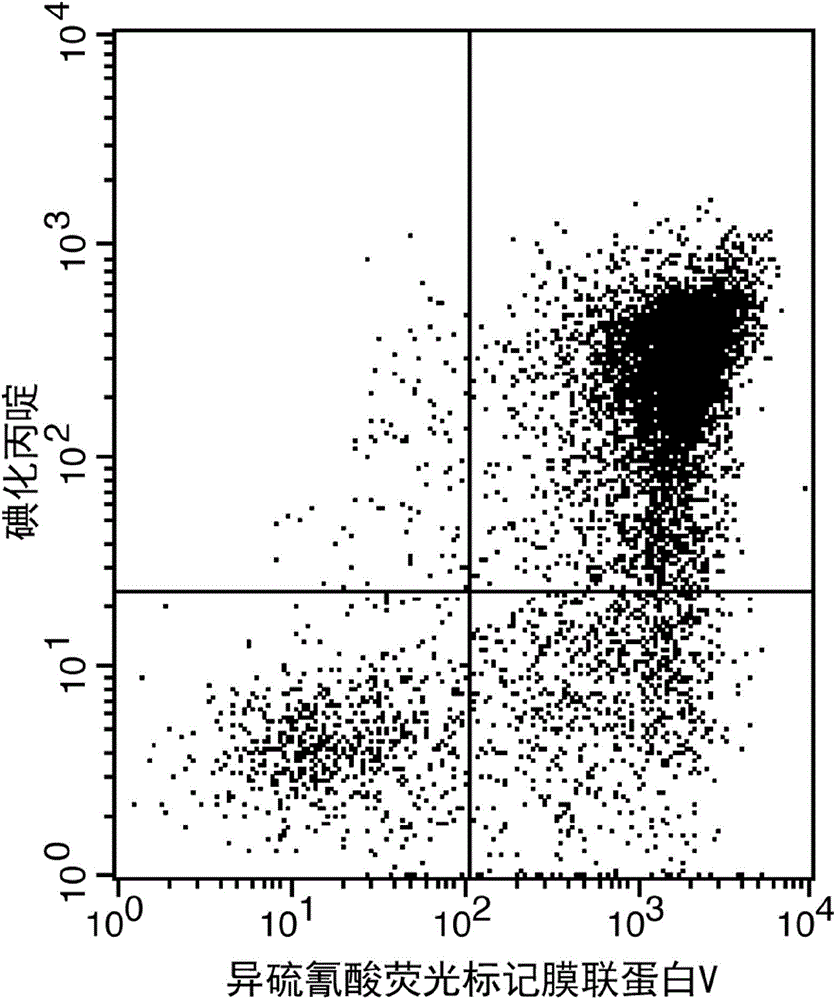Polypeptide extracted from stinging cell venom of fire medusa and application thereof
A fire jellyfish thorn and venom technology is applied in the field of peptides to achieve the effects of few separation steps, rapid separation and mild separation conditions
- Summary
- Abstract
- Description
- Claims
- Application Information
AI Technical Summary
Problems solved by technology
Method used
Image
Examples
Embodiment 1
[0042] A polypeptide molecule, the amino acid sequence of which is shown in SEQ ID No.1;
[0043] SEQ ID No. 1:
[0044]
[0045]
Embodiment 2
[0047] The extraction of the polypeptide of the present invention:
[0048] Step 1. Take the tentacles from the live fire jellyfish and mix them with deionized water at 0°C in a volume ratio of 1:1. After stirring and standing still, take the precipitate and repeat it twice. Centrifuge for the first time. The centrifugation conditions are: centrifugal force 1000G, 4°C, 15min, collect the precipitate;
[0049] Step 2. Mix the precipitate obtained in step 1 with the disodium hydrogen phosphate-sodium dihydrogen phosphate buffer solution with a total phosphate concentration of 0.025mol / L and a pH of 5.5 according to the mass volume ratio of 1g: 40mL, and ultrasonically crush it for the second time. Centrifuge, the centrifugation conditions are: centrifugal force 13000G, 4°C, 2h, collect the supernatant to obtain the venom protein;
[0050] Step 3, take the venom protein obtained in step 2, dilute it 3 times with a buffer solution of disodium hydrogen phosphate-sodium dihydrogen ...
Embodiment 3
[0054] The extraction of the polypeptide of the present invention:
[0055] Step 1. Take the tentacles from the live fire jellyfish and mix them with deionized water at 4°C at a volume ratio of 1:1.5. After stirring and standing still, take the precipitate and repeat it for 4 times. Centrifuge for the first time. The centrifugation conditions are: centrifugal force 1000G, 4°C, 15min, collect the precipitate;
[0056] Step 2, mix the precipitate obtained in step 1 with the disodium hydrogen phosphate-sodium dihydrogen phosphate buffer solution with a total phosphate concentration of 0.025mol / L and a pH of 6.5 according to the mass volume ratio of 1g: 60mL, and ultrasonically crush it for the second time Centrifuge, the centrifugation conditions are: centrifugal force 13000G, 4°C, 2h, collect the supernatant to obtain the venom protein;
[0057] Step 3, take the venom protein obtained in step 2, dilute it 5 times with the disodium hydrogen phosphate-sodium dihydrogen phosphate ...
PUM
| Property | Measurement | Unit |
|---|---|---|
| Lc50 | aaaaa | aaaaa |
Abstract
Description
Claims
Application Information
 Login to View More
Login to View More - R&D
- Intellectual Property
- Life Sciences
- Materials
- Tech Scout
- Unparalleled Data Quality
- Higher Quality Content
- 60% Fewer Hallucinations
Browse by: Latest US Patents, China's latest patents, Technical Efficacy Thesaurus, Application Domain, Technology Topic, Popular Technical Reports.
© 2025 PatSnap. All rights reserved.Legal|Privacy policy|Modern Slavery Act Transparency Statement|Sitemap|About US| Contact US: help@patsnap.com



